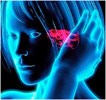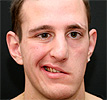Main procedures
Diagnosis and treatment of rotary vertigo

Dizziness and balance disorders are frequently encountered in primary healthcare. It is therefore important to know when to ask for a specialised otoneurological examination. Most of the time, this examination enables the physician to distinguish between a condition affecting the inner ear and a central condition or psychosomatic disorder. This involves looking at the ways in which the different inner ear receptors function (caloric testing, videonystagmograph, vestibular evoked myogenic potential).
Diagnosis and treatment of patients suffering from balance disorders
Common among the elderly, balance disorders are often related to the inability to properly use and centrally integrate the sensory information necessary for balance. The physician searches for balance disorders using various tools to help understand their causes when the inner ear function test is normal. Examining patients’ balance on a fixed platform enables an initial assessment of their static posturography eyes open and closed. Examining the dynamic posturography on a mobile platform gives a greater variety of information.
The EquiTest is the reference tool to assess how well patients use different sensory information to maintain their balance. It enables the physician to quantify balance disorders and to assess whether the vestibular, visual or proprioceptive input is used correctly. It is also useful for rehabilitation, enabling patients to correct their poor use of the visual, vestibular or proprioceptive sensory information in everyday life. The ultimate goal of this rehabilitation method is to prevent falls and their often harmful functional consequences.
New vestibular rehabilitation method
Management of balance disorders aims to treat the cause wherever possible, but most often, it is limited to enabling the patient to use new cognitive strategies to compensate the deficient sensory information.

Dizziness in casualty

Dizziness is a common cause of visits to casualty. It creates several diagnostic problems due to the intricacy of several factors:
• Patients tend to use the word dizziness to excess: this may correspond to real rotary vertigo (the room spinning) or balance disorders and a feeling of drunkenness without spinning.
• Accompanying neurovegetative signs can be intense and cause anguish: nausea, vomiting, or the inability to walk unaided.
• Certain causes can affect functional prognosis.
Tinnitus

Tinnitus is a veritable public health problem (affecting 1 to 8% of the general population). These are abnormal sounds, such as buzzing or whistling in the ears that the patient hears intermittently or all the time, in the absence of any source of sound in the surrounding environment. Affecting one ear or both, tinnitus may or may not be accompanied by deafness. All patients suffering from tinnitus require management by a multi-speciality team including an ENT specialist, a psychiatrist, neuroradiologist and a hearing-aid specialist, to try to determine the cause and find the best treatment.
Eight nerve tumour
This type of tumour may manifest itself by isolated unilateral deafness, a feeling of drunkenness or rotary vertigo. If in doubt the physician will order an MRI of the internal ear canal to pinpoint its location within or outside the canal.
Facial paralysis

Given the functional repercussions and considerable aesthetic consequences, any kind of facial paralysis must be rapidly explored using imaging and electrophysiological tests to detect the cause and initiate the most suitable treatment, which in most cases leads to full functional recovery.

